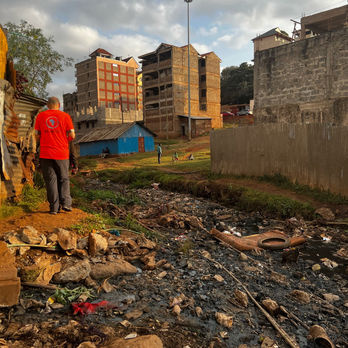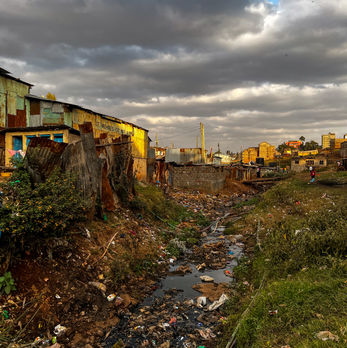The Slum in Kibera
The name "Kibera" comes from a Nubian word meaning "forest" or "jungle." Kibera is one of the largest slums on the continent. The Kibera slum was established in 1912 when the British colonial government founded a settlement for 600 Nubian soldiers and their families.
The History
During the 1930s, the Nairobi Administration temporarily revoked all housing permits and asked the residents of Kibera to prove their Nubian ancestry. Those who could prove their descent were granted the title of "Tenant of the Crown," which gave them the right to reside in Kibera, although this right could be revoked unilaterally by the authorities. Due to this uncertainty about property rights, it became impossible to build brick or concrete houses in Kibera, gradually turning the area into a slum, which is home to (and still houses) the poorest social group in the country.
The Population
The 2009 Kenya Population and Housing Census reported that the population of Kibera was about 170,000. However, an independent door-to-door survey conducted in 2008 estimated that at least 250,000 people lived in Kibera. There is no official census, but it is believed that the current population may have reached half a million people.
Housing Conditions
The government owns all the land in Kibera. 10% of the residents own almost all of the shacks, while the remaining 90% are tenants without rights.
The average size of the shacks is 3.5m x 3.5m. They are built with mud walls, a corrugated metal roof, and a floor made of dirt or concrete. Rent is around €15 per month.
These shacks often house up to 8 or more people, most of whom are forced to sleep on the floor.
Most of Kibera lacks proper sanitation, with each latrine shared by about 50 shacks. Once a latrine is full, young people are tasked with emptying it and carrying the contents to the river. Less than 50% of people in Kenya use flush toilets.
Only about 20% of the shacks in Kibera have electricity.
Until a few years ago, Kibera had no access to clean water, and residents had to fetch water from the Nairobi dam. However, the water from the dam is not clean and causes diseases such as typhoid and cholera. Now, two water pipes have been installed in Kibera, from which residents can collect water for 3 shillings per 20 liters.
(Sources: Wikipedia, Large Movements Association, Report on Population and Health Dynamics in Nairobi’s Informal Settlements by the African Population and Health Research Center, Map Kibera Project).















